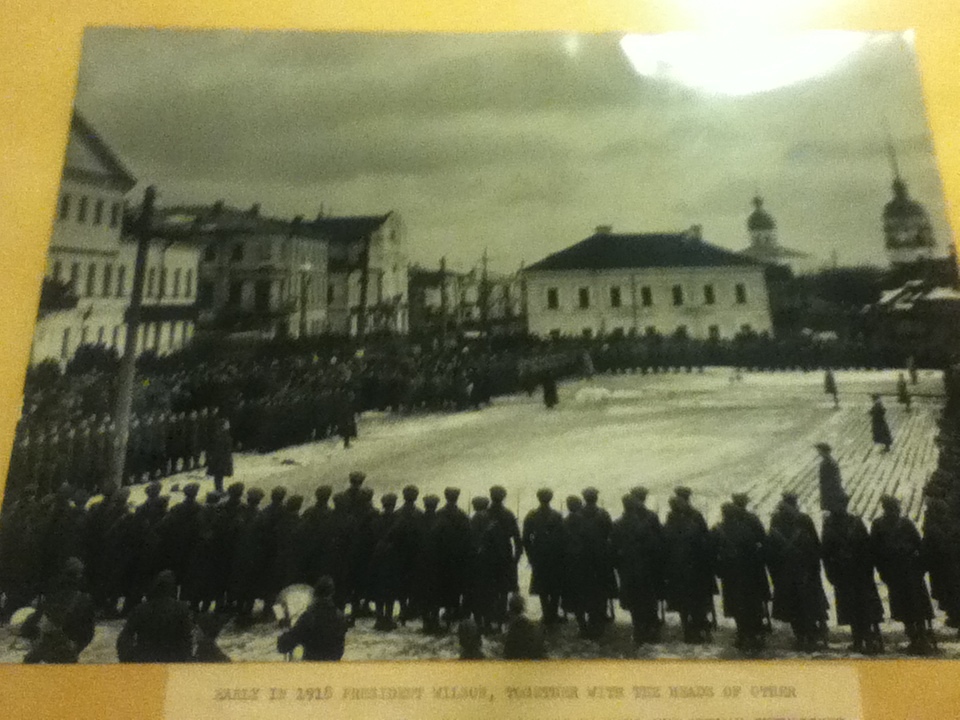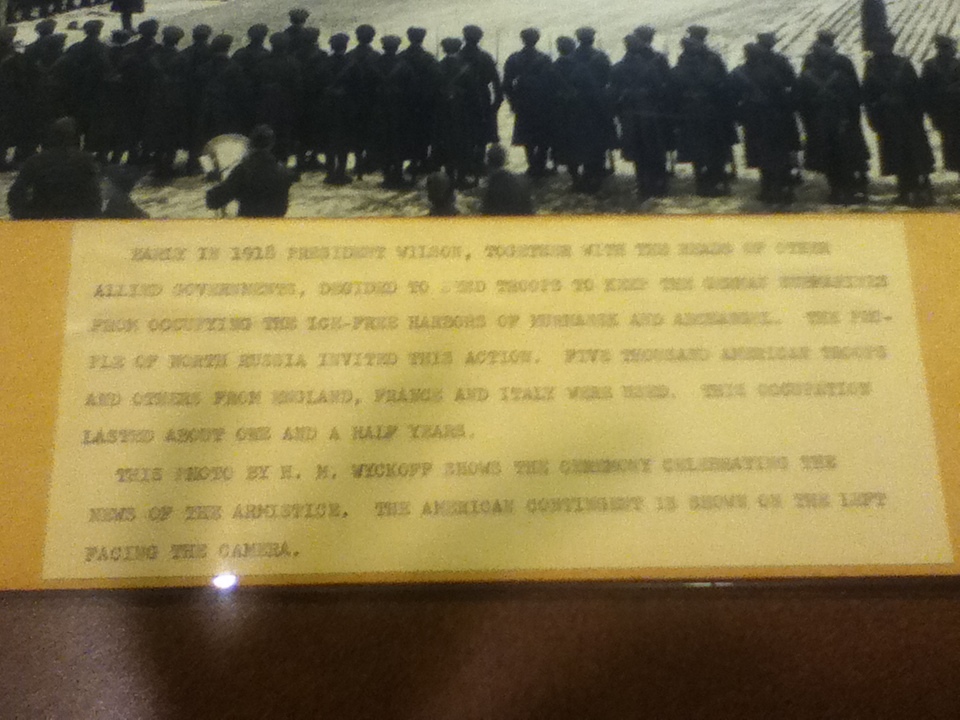Dublin Core
Title
Armistice Day ceremony photograph, 1918
Subject
Photography: Military
Description
This photograph, taken in 1918 by H.M. Wyckoff, depicts a military ceremony consisting of troops from the allied combatants of World War I. This ceremony was a result of the news that the long-awaited Armistice was agreed to and signed on November 11, 1918. The accompanying description reads, “Early in 1918, President Wilson, together with the heads of other Allied governments, decided to send troops to keep the German submarines from occupying the ice-free harbors of Murmansk and Archangel. The people of North Russia invited this action. Five thousand American troops and others from England, France and Italy were used. This occupation lasted about one and a half years. This photo from H.M. Wyckoff shows the ceremony celebrating the news of the Armistice. The American contingent is shown on the left facing the camera.”
Wyckoff’s photograph tells two narratives, both are significant to understanding the period following Armistice. The first narrative speaks to the confusion soldiers felt after the news of Armistice. Following Armistice, soldiers, who dedicated their lives to the Great War, were suddenly separated from the only life they knew. With the war over, these soldiers had no idea what their next step would be and where they would end up. They were not able to celebrate the end of the war because to them it was as if a loved one had just passed away, hence the somber funeral like feeling present in the photograph. Instead of a celebration of war’s end, this photograph is a depiction of the soldiers attending the funeral of the Great War.
The second narrative in this photograph speaks of an unknown feature of the end of the Great War, the American infiltration of the Russian Civil War. The photograph's description argues that the troops present in the photo were deployed to protect vital Russian ports from the unrelenting German submarine campaign. However, history and the photograph's location tell a different story. These troops were in a position to defend the remains of the once great Imperial Russia from the burgeoning Red Army. Using the Great War as a cover, Allied powers were able to place an expeditionary force in Russia in preparation for the impending showdown between the communist Red Army and the Allied-backed White Army, which just happened to occur in the port city of Archangel.
Wyckoff’s photograph tells two narratives, both are significant to understanding the period following Armistice. The first narrative speaks to the confusion soldiers felt after the news of Armistice. Following Armistice, soldiers, who dedicated their lives to the Great War, were suddenly separated from the only life they knew. With the war over, these soldiers had no idea what their next step would be and where they would end up. They were not able to celebrate the end of the war because to them it was as if a loved one had just passed away, hence the somber funeral like feeling present in the photograph. Instead of a celebration of war’s end, this photograph is a depiction of the soldiers attending the funeral of the Great War.
The second narrative in this photograph speaks of an unknown feature of the end of the Great War, the American infiltration of the Russian Civil War. The photograph's description argues that the troops present in the photo were deployed to protect vital Russian ports from the unrelenting German submarine campaign. However, history and the photograph's location tell a different story. These troops were in a position to defend the remains of the once great Imperial Russia from the burgeoning Red Army. Using the Great War as a cover, Allied powers were able to place an expeditionary force in Russia in preparation for the impending showdown between the communist Red Army and the Allied-backed White Army, which just happened to occur in the port city of Archangel.
Creator
H.M. Wyckoff
Source
McFarlin Library, Department of Special Collections and University Archives, University of Tulsa. 2933 E. 6th St. Tulsa, Oklahoma 74104-3123
Publisher
H.M. Wyckoff
Date
1918
Language
English
Identifier
1000-131
Coverage
United States of America, Russia
Still Image Item Type Metadata
Original Format
Photograph
Physical Dimensions
22.8 x 30.2 cm

